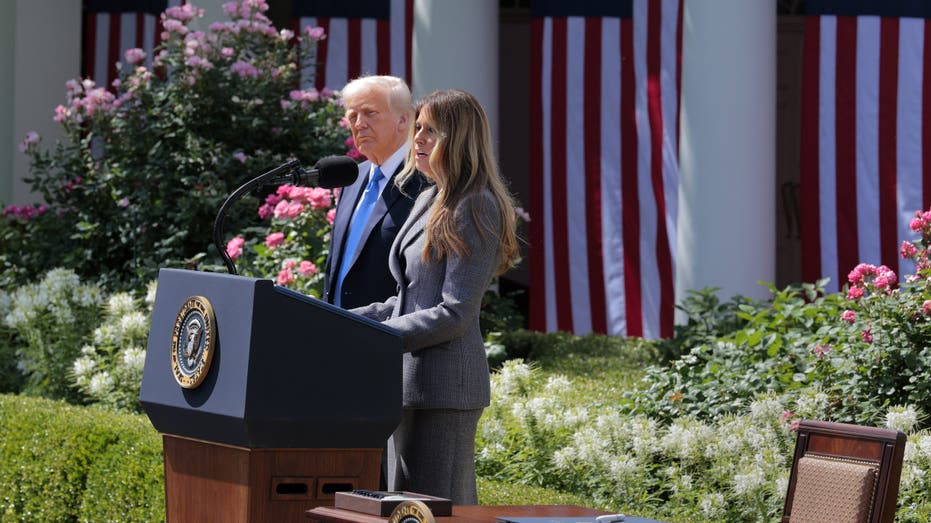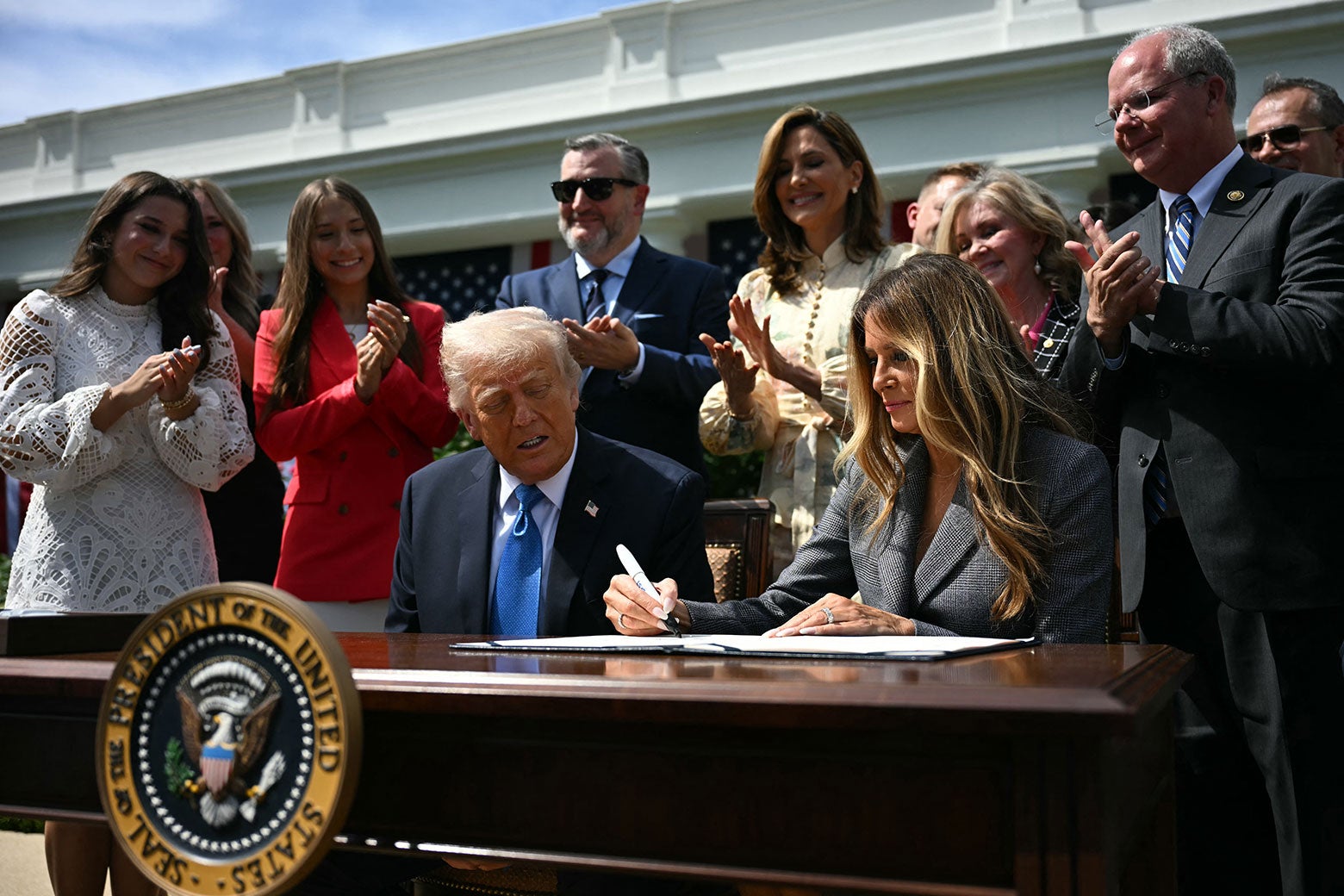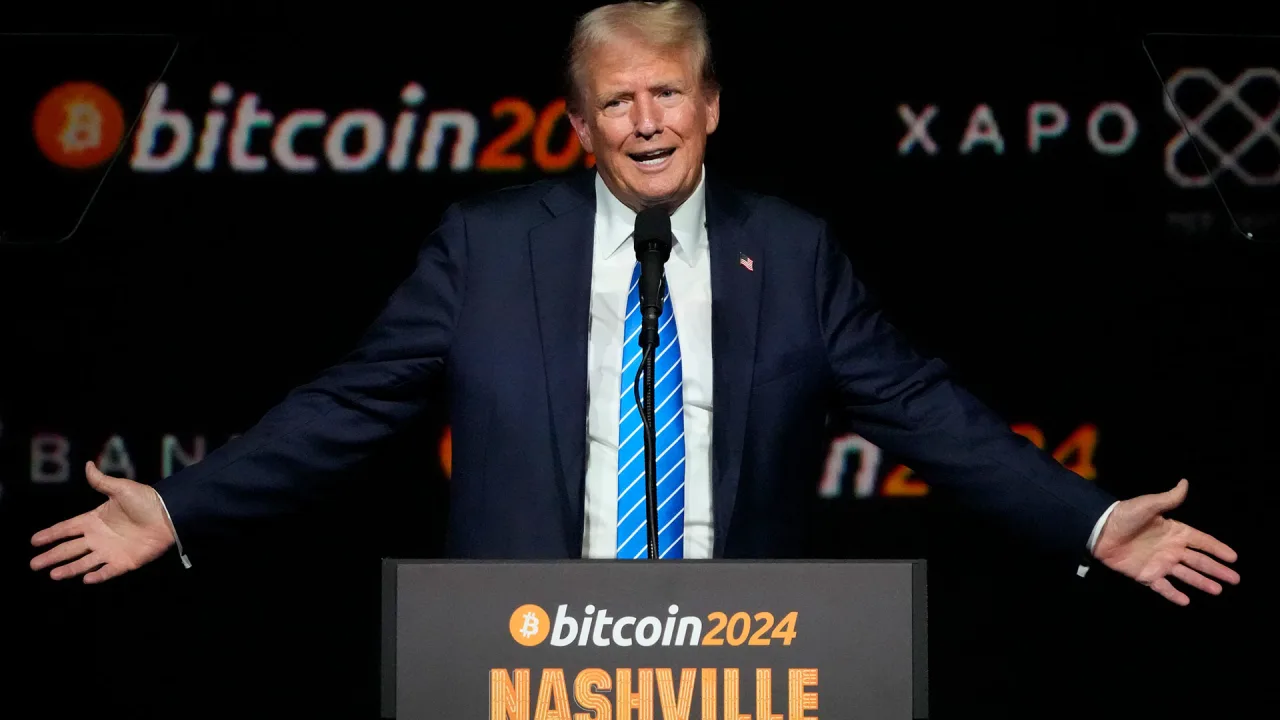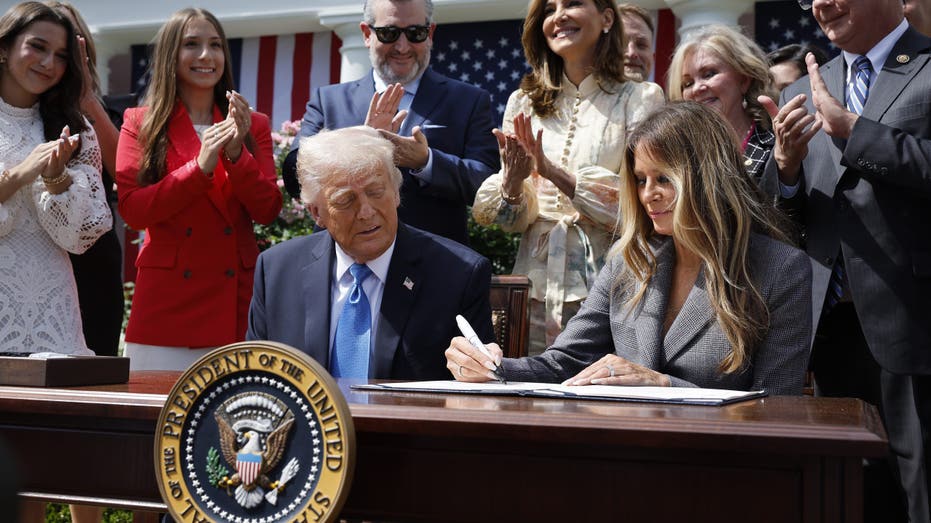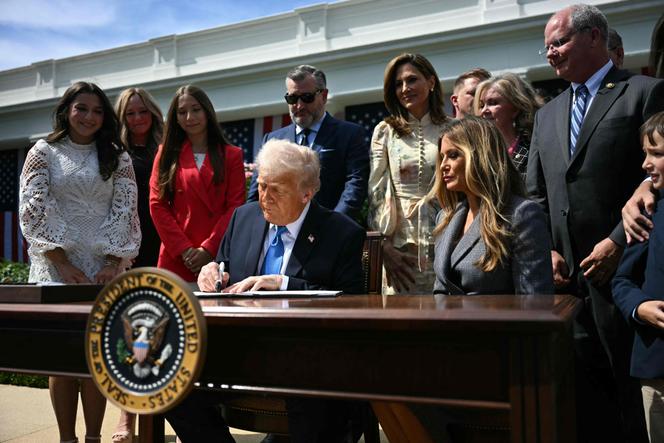A timeline of Ivanka Trump and Jared Kushner's relationship
Ivanka Trump has made it clear that she's done with politics. That hasn't stopped her and husband Jared Kushner from remaining an influential political couple.They have not formally reprised their roles as White House advisors in President Donald Trump's second administration, but they've remained present in Donald Trump's political orbit.While Ivanka Trump opted out of the 2024 campaign trail, she and Kushner still appeared at the Republican National Convention, Donald Trump's victory party on election night, and the inauguration. Kushner also reportedly served as an informal advisor ahead of Donald Trump's trip to the Middle East in May, CNN reported.Ivanka Trump, who is Donald Trump's eldest daughter, converted to Judaism before marrying Kushner in 2009. They have three children: Arabella, Joseph, and Theodore.Here's a timeline of Ivanka Trump and Kushner's relationship.
2007: Ivanka Trump and Jared Kushner met at a networking lunch arranged by one of her longtime business partners.
Ivanka Trump and Jared Kushner in 2007.
PAUL LAURIE/Patrick McMullan via Getty Images
Ivanka Trump and Kushner were both 25 at the time."They very innocently set us up thinking that our only interest in one another would be transactional," Ivanka Trump told Vogue in 2015. "Whenever we see them we're like, 'The best deal we ever made!'"
2008: Ivanka Trump and Kushner broke up because of religious differences.
Jared Kushner and Ivanka Trump in 2008.
Patrick McMullan/Patrick McMullan via Getty Images
Kushner was raised in the modern Orthodox Jewish tradition, and it was important to his family for him to marry someone Jewish. Ivanka Trump's family is Presbyterian.
2008: Three months later, the couple rekindled their romance on Rupert Murdoch's yacht.
Ivanka Trump and Jared Kushner in 2008.
David X Prutting/Patrick McMullan/Patrick McMullan via Getty Images
In his memoir, "Breaking History," Kushner wrote that Murdoch's then-wife, Wendi Murdoch, was a mutual friend who invited them both on the yacht.
May 2009: They attended the Met Gala together for the first time.
Jared Kushner and Ivanka Trump at the Met Gala.
BILLY FARRELL/Patrick McMullan via Getty Images
The theme of the Met Gala that year was "The Model As Muse." Ivanka Trump wore a gown by designer Brian Reyes.
July 2009: Ivanka Trump completed her conversion to Judaism, and she and Kushner got engaged.
Jared Kushner and Ivanka Trump in 2009.
Billy Farrell/Patrick McMullan/Patrick McMullan via Getty Images
Kushner proposed with a 5.22-carat cushion-cut diamond engagement ring.Ivanka Trump told New York Magazine that she and her fiancé were "very mellow.""We go to the park. We go biking together. We go to the 2nd Avenue Deli," she said. "We both live in this fancy world. But on a personal level, I don't think I could be with somebody — I know he couldn't be with somebody — who needed to be 'on' all the time."
October 2009: Ivanka Trump and Kushner married at the Trump National Golf Club in New Jersey.
Jared Kushner and Ivanka Trump on their wedding day.
Brian Marcus/Fred Marcus Photography via Getty Images
The couple invited 500 guests, including celebrities like Barbara Walters, Regis Philbin, and Anna Wintour, as well as politicians such as Rudy Giuliani and Andrew Cuomo.
July 2011: The couple welcomed their first child, Arabella.
Ivanka Trump and Jared Kushner with Arabella Kushner.
Robin Marchant/Getty Images
"This morning @jaredkushner and I welcomed a beautiful and healthy little baby girl into the world," Ivanka announced on X, then Twitter. "We feel incredibly grateful and blessed. Thank you all for your support and well wishes!"
October 2013: Ivanka Trump gave birth to their second child, Joseph.
Ivanka Trump with Arabella Rose Kushner and Joseph Frederick Kushner in 2017.
Alo Ceballos/GC Images
He was named for Kushner's paternal grandfather Joseph and given the middle name Frederick after Donald Trump's father.
March 2016: Kushner and Ivanka Trump welcomed their third child, Theodore, in the midst of Donald Trump's presidential campaign.
Ivanka Trump carried her son Theodore as she held hands with Joseph alongside Jared Kushner and daughter Arabella on the White House lawn.
SAUL LOEB/AFP via Getty Images
"I said, 'Ivanka, it would be great if you had your baby in Iowa.' I really want that to happen. I really want that to happen," Donald Trump told supporters in Iowa in January 2016.All three of the couple's children were born in New York City.
May 2016: They attended the Met Gala two months after Ivanka Trump gave birth.
Jared Kushner and Ivanka Trump attend the Met Gala.
Kevin Mazur/WireImage
Ivanka Trump wore a red Ralph Lauren Collection halter jumpsuit.On a 2017 episode of "The Late Late Show with James Corden," Anna Wintour said that she would never invite Donald Trump to another Met Gala.
January 2017: Ivanka Trump and Kushner attended Donald Trump's inauguration and danced together at the Liberty Ball.
Ivanka Trump and Jared Kushner on Inauguration Day.
Photo by Rob Carr/Getty Images
The Liberty Ball was the first of three inaugural balls that Donald Trump attended.
January 2017: After the inauguration, Ivanka and Kushner relocated to a million home in the Kalorama section of Washington, DC.
Jared Kushner and Ivanka Trump's house in Washington, DC.
PAUL J. RICHARDS/AFP via Getty Images
Ivanka Trump and Kushner rented the 7,000-square-foot home from billionaire Andrónico Luksic for a month, The Wall Street Journal reported.
May 2017: They accompanied Donald Trump on his first overseas trip in office.
Jared Kushner and Ivanka Trump with Pope Francis.
Vatican Pool - Corbis/Corbis via Getty Images
Kushner and Ivanka Trump both served as advisors to the president. For the first overseas trip of Donald Trump's presidency, they accompanied him to Saudi Arabia, Israel, the Vatican, and summits in Brussels and Sicily.
October 2019: The couple celebrated their 10th wedding anniversary with a lavish party at Camp David.
Ivanka Trump and Jared Kushner at a state dinner.
MANDEL NGAN/AFP via Getty Images
All of the Trump and Kushner siblings were in attendance. A White House official told CNN that the couple was covering the cost of the party, but Donald Trump tweeted that the cost would be "totally paid for by me!"
August 2020: Ivanka Trump spoke about moving their family to Washington, DC, at the Republican National Convention.
Jared Kushner and Ivanka Trump at the Republican National Convention.
SAUL LOEB/AFP via Getty Images
"When Jared and I moved with our three children to Washington, we didn't exactly know what we were in for," she said in her speech. "But our kids loved it from the start."
December 2020: Ivanka Trump and Kushner reportedly bought a million empty lot in Miami's "Billionaire Bunker."
Jared Kushner and Ivanka Trump's plot of land in Indian Creek Village.
The Jills Zeder Group; Samir Hussein/WireImage/Getty Images
After Donald Trump lost the 2020 election, Page Six reported that the couple purchased a 1.8-acre waterfront lot owned by singer Julio Iglesias, Enrique Iglesias' father, in Indian Creek Village, Florida.The island where it sits has the nickname "Billionaire Bunker" thanks to its multitude of ultra-wealthy residents over the years, including billionaire investor Carl Icahn, supermodel Adriana Lima, and former Miami Dolphins coach Don Shula.
January 2021: They skipped Joe Biden's inauguration, flying with Donald Trump to his Mar-a-Lago residence in Palm Beach, Florida, instead.
Ivanka Trump, Jared Kushner, and their children prepared for Donald Trump's departure on Inauguration Day.
ALEX EDELMAN/AFP via Getty Images
Donald Trump did not attend Biden's inauguration, breaking a long-standing norm in US democracy. While initial reports said that Ivanka Trump was planning to attend the inauguration, a White House official told People magazine that "Ivanka is not expected to attend the inauguration nor was she ever expected to."
January 2021: The couple signed a lease for a luxury Miami Beach condo near their Indian Creek Village property.
Arte Surfside.
Antonio Citterio Patricia Viel
Ivanka Trump and Kushner signed a lease for a "large, unfurnished unit" in the amenities-packed Arte Surfside condominium building in Surfside, Florida.Surfside, a beachside town just north of Miami Beach that's home to fewer than 6,000 people, is only a five-minute drive from Indian Creek Island, where they bought their million empty lot.
April 2021: Ivanka Trump and Kushner reportedly added a million mansion in Indian Creek Village to their Florida real-estate profile.
Ivanka Trump and Jared Kushner on a walk in Florida.
MEGA/GC Images
The Real Deal reported that Ivanka and Kushner purchased another Indian Creek property — this time, a 8,510-square-foot mansion situated on a 1.3-acre estate.
June 2021: Several outlets reported that the couple began to distance themselves from Donald Trump due to his fixation on conspiracy theories about the 2020 election.
Ivanka Trump and Jared Kushner behind Donald Trump.
Kevin Lamarque/Reuters
CNN reported that Trump was prone to complain about the 2020 election and falsely claim it was "stolen" from him to anyone listening and that his "frustrations emerge in fits and starts — more likely when he is discussing his hopeful return to national politics."While Ivanka and Kushner had been living in their Miami Beach condo, not far from Trump's Mar-a-Lago club in Palm Beach, Florida, they'd visited Trump less and less frequently and were absent from big events at Mar-a-Lago, CNN said.The New York Times also reported that Kushner wanted "to focus on writing his book and establishing a simpler relationship" with the former president.
October 2021: Ivanka Trump and Kushner visited Israel's parliament for the inaugural event of the Abraham Accords Caucus.
Jared Kushner and Ivanka Trump in Israel.
AHMAD GHARABLI/AFP via Getty Images
The Abraham Accords, which Kushner helped broker in August 2020, normalized relations between Israel and the United Arab Emirates, Bahrain, Sudan, and Morocco.During their visit, Ivanka Trump and Kushner met with then-former Prime Minister Benjamin Netanyahu and attended an event at the Museum of Tolerance Jerusalem with former US Secretary of State Mike Pompeo.
August 2022: Kushner released his memoir, "Breaking History," in which he wrote about their courtship.
Jared Kushner.
John Lamparski/Getty Images for Concordia Summit
"In addition to being arrestingly beautiful, which I knew before we met, she was warm, funny, and brilliant," he wrote of getting to know Ivanka Trump. "She has a big heart and a tremendous zest for exploring new things."He also wrote that when he told Donald Trump that he was planning a surprise engagement, Trump "picked up the intercom and alerted Ivanka that she should expect an imminent proposal."
November 2022: Kushner attended Donald Trump's 2024 campaign announcement without Ivanka Trump.
Kimberly Guilfoyle, Jared Kushner, Eric Trump, and Lara Trump at Donald Trump's presidential campaign announcement.
Jonathan Ernst/Reuters
Ivanka Trump released a statement explaining her absence from the event."I love my father very much," her statement read. "This time around, I am choosing to prioritize my children and the private life we are creating as a family. I do not plan to be involved in politics. While I will always love and support my father, going forward I will do so outside the political arena."
July 2024: Ivanka Trump and Kushner made a rare political appearance at the Republican National Convention.
Donald Trump and Melania Trump onstage with Ivanka Trump and Jared Kushner.
Jason Armond/Los Angeles Times via Getty Images
Ivanka Trump did not campaign for her father or give a speech as she had at past Republican National Conventions, but she and Jared Kushner joined Trump family members onstage after Donald Trump's remarks.
November 2024: They joined members of the Trump family in Palm Beach, Florida, to celebrate Donald Trump's election victory.
#timeline #ivanka #trump #jared #kushner039sA timeline of Ivanka Trump and Jared Kushner's relationship
Ivanka Trump has made it clear that she's done with politics. That hasn't stopped her and husband Jared Kushner from remaining an influential political couple.They have not formally reprised their roles as White House advisors in President Donald Trump's second administration, but they've remained present in Donald Trump's political orbit.While Ivanka Trump opted out of the 2024 campaign trail, she and Kushner still appeared at the Republican National Convention, Donald Trump's victory party on election night, and the inauguration. Kushner also reportedly served as an informal advisor ahead of Donald Trump's trip to the Middle East in May, CNN reported.Ivanka Trump, who is Donald Trump's eldest daughter, converted to Judaism before marrying Kushner in 2009. They have three children: Arabella, Joseph, and Theodore.Here's a timeline of Ivanka Trump and Kushner's relationship.
2007: Ivanka Trump and Jared Kushner met at a networking lunch arranged by one of her longtime business partners.
Ivanka Trump and Jared Kushner in 2007.
PAUL LAURIE/Patrick McMullan via Getty Images
Ivanka Trump and Kushner were both 25 at the time."They very innocently set us up thinking that our only interest in one another would be transactional," Ivanka Trump told Vogue in 2015. "Whenever we see them we're like, 'The best deal we ever made!'"
2008: Ivanka Trump and Kushner broke up because of religious differences.
Jared Kushner and Ivanka Trump in 2008.
Patrick McMullan/Patrick McMullan via Getty Images
Kushner was raised in the modern Orthodox Jewish tradition, and it was important to his family for him to marry someone Jewish. Ivanka Trump's family is Presbyterian.
2008: Three months later, the couple rekindled their romance on Rupert Murdoch's yacht.
Ivanka Trump and Jared Kushner in 2008.
David X Prutting/Patrick McMullan/Patrick McMullan via Getty Images
In his memoir, "Breaking History," Kushner wrote that Murdoch's then-wife, Wendi Murdoch, was a mutual friend who invited them both on the yacht.
May 2009: They attended the Met Gala together for the first time.
Jared Kushner and Ivanka Trump at the Met Gala.
BILLY FARRELL/Patrick McMullan via Getty Images
The theme of the Met Gala that year was "The Model As Muse." Ivanka Trump wore a gown by designer Brian Reyes.
July 2009: Ivanka Trump completed her conversion to Judaism, and she and Kushner got engaged.
Jared Kushner and Ivanka Trump in 2009.
Billy Farrell/Patrick McMullan/Patrick McMullan via Getty Images
Kushner proposed with a 5.22-carat cushion-cut diamond engagement ring.Ivanka Trump told New York Magazine that she and her fiancé were "very mellow.""We go to the park. We go biking together. We go to the 2nd Avenue Deli," she said. "We both live in this fancy world. But on a personal level, I don't think I could be with somebody — I know he couldn't be with somebody — who needed to be 'on' all the time."
October 2009: Ivanka Trump and Kushner married at the Trump National Golf Club in New Jersey.
Jared Kushner and Ivanka Trump on their wedding day.
Brian Marcus/Fred Marcus Photography via Getty Images
The couple invited 500 guests, including celebrities like Barbara Walters, Regis Philbin, and Anna Wintour, as well as politicians such as Rudy Giuliani and Andrew Cuomo.
July 2011: The couple welcomed their first child, Arabella.
Ivanka Trump and Jared Kushner with Arabella Kushner.
Robin Marchant/Getty Images
"This morning @jaredkushner and I welcomed a beautiful and healthy little baby girl into the world," Ivanka announced on X, then Twitter. "We feel incredibly grateful and blessed. Thank you all for your support and well wishes!"
October 2013: Ivanka Trump gave birth to their second child, Joseph.
Ivanka Trump with Arabella Rose Kushner and Joseph Frederick Kushner in 2017.
Alo Ceballos/GC Images
He was named for Kushner's paternal grandfather Joseph and given the middle name Frederick after Donald Trump's father.
March 2016: Kushner and Ivanka Trump welcomed their third child, Theodore, in the midst of Donald Trump's presidential campaign.
Ivanka Trump carried her son Theodore as she held hands with Joseph alongside Jared Kushner and daughter Arabella on the White House lawn.
SAUL LOEB/AFP via Getty Images
"I said, 'Ivanka, it would be great if you had your baby in Iowa.' I really want that to happen. I really want that to happen," Donald Trump told supporters in Iowa in January 2016.All three of the couple's children were born in New York City.
May 2016: They attended the Met Gala two months after Ivanka Trump gave birth.
Jared Kushner and Ivanka Trump attend the Met Gala.
Kevin Mazur/WireImage
Ivanka Trump wore a red Ralph Lauren Collection halter jumpsuit.On a 2017 episode of "The Late Late Show with James Corden," Anna Wintour said that she would never invite Donald Trump to another Met Gala.
January 2017: Ivanka Trump and Kushner attended Donald Trump's inauguration and danced together at the Liberty Ball.
Ivanka Trump and Jared Kushner on Inauguration Day.
Photo by Rob Carr/Getty Images
The Liberty Ball was the first of three inaugural balls that Donald Trump attended.
January 2017: After the inauguration, Ivanka and Kushner relocated to a million home in the Kalorama section of Washington, DC.
Jared Kushner and Ivanka Trump's house in Washington, DC.
PAUL J. RICHARDS/AFP via Getty Images
Ivanka Trump and Kushner rented the 7,000-square-foot home from billionaire Andrónico Luksic for a month, The Wall Street Journal reported.
May 2017: They accompanied Donald Trump on his first overseas trip in office.
Jared Kushner and Ivanka Trump with Pope Francis.
Vatican Pool - Corbis/Corbis via Getty Images
Kushner and Ivanka Trump both served as advisors to the president. For the first overseas trip of Donald Trump's presidency, they accompanied him to Saudi Arabia, Israel, the Vatican, and summits in Brussels and Sicily.
October 2019: The couple celebrated their 10th wedding anniversary with a lavish party at Camp David.
Ivanka Trump and Jared Kushner at a state dinner.
MANDEL NGAN/AFP via Getty Images
All of the Trump and Kushner siblings were in attendance. A White House official told CNN that the couple was covering the cost of the party, but Donald Trump tweeted that the cost would be "totally paid for by me!"
August 2020: Ivanka Trump spoke about moving their family to Washington, DC, at the Republican National Convention.
Jared Kushner and Ivanka Trump at the Republican National Convention.
SAUL LOEB/AFP via Getty Images
"When Jared and I moved with our three children to Washington, we didn't exactly know what we were in for," she said in her speech. "But our kids loved it from the start."
December 2020: Ivanka Trump and Kushner reportedly bought a million empty lot in Miami's "Billionaire Bunker."
Jared Kushner and Ivanka Trump's plot of land in Indian Creek Village.
The Jills Zeder Group; Samir Hussein/WireImage/Getty Images
After Donald Trump lost the 2020 election, Page Six reported that the couple purchased a 1.8-acre waterfront lot owned by singer Julio Iglesias, Enrique Iglesias' father, in Indian Creek Village, Florida.The island where it sits has the nickname "Billionaire Bunker" thanks to its multitude of ultra-wealthy residents over the years, including billionaire investor Carl Icahn, supermodel Adriana Lima, and former Miami Dolphins coach Don Shula.
January 2021: They skipped Joe Biden's inauguration, flying with Donald Trump to his Mar-a-Lago residence in Palm Beach, Florida, instead.
Ivanka Trump, Jared Kushner, and their children prepared for Donald Trump's departure on Inauguration Day.
ALEX EDELMAN/AFP via Getty Images
Donald Trump did not attend Biden's inauguration, breaking a long-standing norm in US democracy. While initial reports said that Ivanka Trump was planning to attend the inauguration, a White House official told People magazine that "Ivanka is not expected to attend the inauguration nor was she ever expected to."
January 2021: The couple signed a lease for a luxury Miami Beach condo near their Indian Creek Village property.
Arte Surfside.
Antonio Citterio Patricia Viel
Ivanka Trump and Kushner signed a lease for a "large, unfurnished unit" in the amenities-packed Arte Surfside condominium building in Surfside, Florida.Surfside, a beachside town just north of Miami Beach that's home to fewer than 6,000 people, is only a five-minute drive from Indian Creek Island, where they bought their million empty lot.
April 2021: Ivanka Trump and Kushner reportedly added a million mansion in Indian Creek Village to their Florida real-estate profile.
Ivanka Trump and Jared Kushner on a walk in Florida.
MEGA/GC Images
The Real Deal reported that Ivanka and Kushner purchased another Indian Creek property — this time, a 8,510-square-foot mansion situated on a 1.3-acre estate.
June 2021: Several outlets reported that the couple began to distance themselves from Donald Trump due to his fixation on conspiracy theories about the 2020 election.
Ivanka Trump and Jared Kushner behind Donald Trump.
Kevin Lamarque/Reuters
CNN reported that Trump was prone to complain about the 2020 election and falsely claim it was "stolen" from him to anyone listening and that his "frustrations emerge in fits and starts — more likely when he is discussing his hopeful return to national politics."While Ivanka and Kushner had been living in their Miami Beach condo, not far from Trump's Mar-a-Lago club in Palm Beach, Florida, they'd visited Trump less and less frequently and were absent from big events at Mar-a-Lago, CNN said.The New York Times also reported that Kushner wanted "to focus on writing his book and establishing a simpler relationship" with the former president.
October 2021: Ivanka Trump and Kushner visited Israel's parliament for the inaugural event of the Abraham Accords Caucus.
Jared Kushner and Ivanka Trump in Israel.
AHMAD GHARABLI/AFP via Getty Images
The Abraham Accords, which Kushner helped broker in August 2020, normalized relations between Israel and the United Arab Emirates, Bahrain, Sudan, and Morocco.During their visit, Ivanka Trump and Kushner met with then-former Prime Minister Benjamin Netanyahu and attended an event at the Museum of Tolerance Jerusalem with former US Secretary of State Mike Pompeo.
August 2022: Kushner released his memoir, "Breaking History," in which he wrote about their courtship.
Jared Kushner.
John Lamparski/Getty Images for Concordia Summit
"In addition to being arrestingly beautiful, which I knew before we met, she was warm, funny, and brilliant," he wrote of getting to know Ivanka Trump. "She has a big heart and a tremendous zest for exploring new things."He also wrote that when he told Donald Trump that he was planning a surprise engagement, Trump "picked up the intercom and alerted Ivanka that she should expect an imminent proposal."
November 2022: Kushner attended Donald Trump's 2024 campaign announcement without Ivanka Trump.
Kimberly Guilfoyle, Jared Kushner, Eric Trump, and Lara Trump at Donald Trump's presidential campaign announcement.
Jonathan Ernst/Reuters
Ivanka Trump released a statement explaining her absence from the event."I love my father very much," her statement read. "This time around, I am choosing to prioritize my children and the private life we are creating as a family. I do not plan to be involved in politics. While I will always love and support my father, going forward I will do so outside the political arena."
July 2024: Ivanka Trump and Kushner made a rare political appearance at the Republican National Convention.
Donald Trump and Melania Trump onstage with Ivanka Trump and Jared Kushner.
Jason Armond/Los Angeles Times via Getty Images
Ivanka Trump did not campaign for her father or give a speech as she had at past Republican National Conventions, but she and Jared Kushner joined Trump family members onstage after Donald Trump's remarks.
November 2024: They joined members of the Trump family in Palm Beach, Florida, to celebrate Donald Trump's election victory.
#timeline #ivanka #trump #jared #kushner039s




